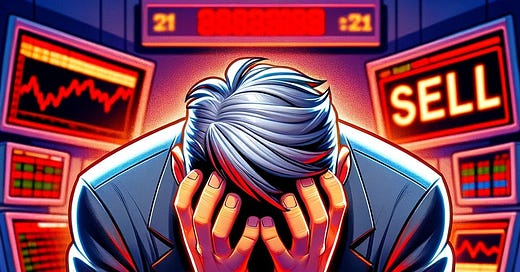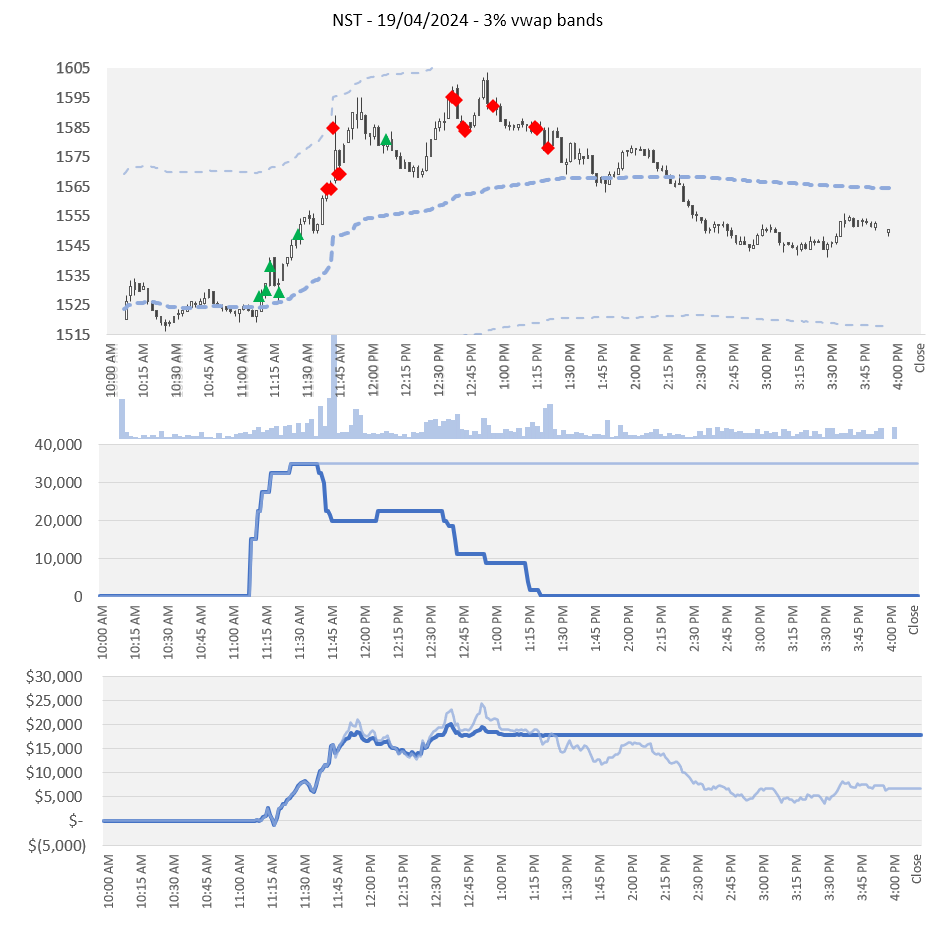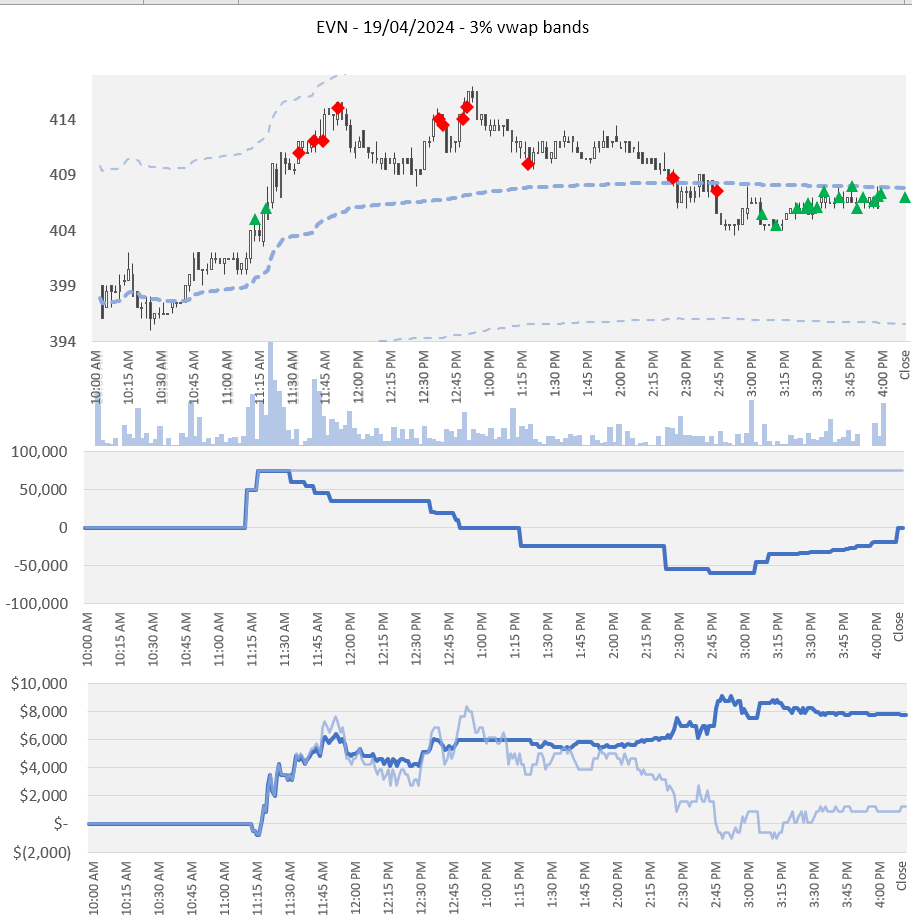I started the week by losing a lot of money.
Taking hits is never comfortable despite trading for years and through multiple cycles. You don’t just grow immune to them. I feel them deeply in the same way that you do. The magnitude may differ, but the underlying emotions of fear, frustration, disgust, and withdrawal are the same.
This raises some interesting questions which I believe separate the most resilient and the experts in any performance domain:
How do you deal with your emotions after an outsized setback?
How do you think during the next trade after a recent loss?
How do you get out of bed and continue to come to work with energy and clarity when your account is in a drawdown?
How do you stick to “the process?”
These are real problems we need to confront, tackle, and solve in trading.
I can’t say I have the explicit answers to these questions. However, I thought a recollection of my recent experience and the week that was would make for an interesting post. What happened and how did I deal with it?
What happened?
The market has been going up and exposure has been rewarded. Don’t confuse skill with good market conditions. An old mentor once said to me that an individual stock move can be put down to:
→50% due to the market;
→25% due to the sector;
→25% due to stock-specific fundamentals.
Simply put, in this current bull market regime, the odds have been in your favour if you are long and not in total trash.
I have a few strategies that try to capitalise on overnight moves that offer diversification away from my intraday wheelhouse. These playbooks have contributed more than 50% of my P/L year to date. It all feels very nice after years in the doldrums for these playbooks. I am back playing the game and it has been working.
Are these the underlying conditions that breed overconfidence and complacency? Most likely.
This all brings me to Monday 15th April and the main trade in question: Piedmont Lithium (PLL). It triggered my momentum system so I bought into the close as per my rules (a playbook). A slight problem with this trade was that the stock was up 40% on fresh news and has a US-listed line that does a tonne of volume. It was going to require a monumental effort for offshore traders to keep this supported for a further stag into Australia open the next day. Those flows are outside of my control.
Adding to my overnight exposure, I went long Aluminium stocks on news that the LME had banned the delivery of new Russian metal (non-playbook trade and pure discretion). We did the work as a team and I thought the variables were sound, especially given LME pricing was still strong during our time zone. I implemented a plan and gave it a try.
Fast forward to Tuesday and Piedmont is indicated down 20% as those pesky US traders didn’t come to the party. Aluminum stocks gap down 3% in a non-event. The market itself gaps down 80 which decimates the other core positions I have in the book. My hedge is inadequate for the stocks I own versus the risk-off move.
I am down -$30k and it’s not even 10.10 am.
Those good times certainly feel more painful now:
How to deal with it?
In some ways, there is an element of fortune when you know you are about to lose money from an offshore event. There is time before the opening to prepare and fully accept the situation. I can internalise the loss. If the trade idea is clearly wrong, then it would make no sense to not get out of everything straight away. The key is to acknowledge the reality.
I have a pre-market check-in for this very reason. On this particular day, I knew I would be down significantly before the opening so I made the appropriate plans:
Visualise and accept the $ loss
Exit orders on open to stop out
Notify management
New risk plan for any new positions entered on the day
I am trying to control what I can to move forward without freezing.
The most important work comes at the end of the day. The temptation is to sign out, feel sorry for ourselves, and engage in mindless distractions. However, the true competitive edge comes from reflecting on these moments by putting in the work versus others who give up. Don’t personalise the painful days. Instead, treat them as a huge learning experience to push you forward. Own them and be stoic to the outcome. Once you can separate yourself from the initial emotion, you will often find key flaws in your edge or with how you applied yourself (often without edge). Learn from each moment.
This is the exercise I took by sending around my report card to my team post the close. It isn’t fun to show one’s vulnerabilities but it gives clarity to move forward. I detailed the mistakes I made and the specific improvements I need to address my shortcomings. Particular focus was placed on updating my risk management system and going deeper into the dual-listed market. This substack does not have space for the full details BUT if you are interested in my report card with specifics, email me and I will forward on.
Writing is the foundational skill that brings self-awareness to the situation instead of spiraling out of control. I concluded:
“Its time to tighten up and now! Don’t let this spiral and treat today as a good process, a bad outcome. The market is -150 and this is the first sign of real volatility off the top. Everyone has been building into overnights and I can now feel the steam coming out. These strategies have been working so I can’t have it both ways. However, this first major increase in volatility is a sign to double down on my intraday once more. I have that skill set to lean on. Take away the variance. Heed the message”
Moving on to “One Good Trade”
Once the dust has settled and mistakes analysed, it is important just to move on. Don’t dwell on the past but instead go through the motions, focus on the updated process, sit, and be present in that seat. For me, the new goal is just to get green with one good trade. It is about waiting for my best setups and edge once more.
As I touched upon in the War of Art, the universe has a way of offering up opportunities if we can just be open to it. Only in the right mindset is this possible. This is why the prior work reflecting and paying our dues is so necessary. We need to be able to process and learn before we can move on without baggage.
And so it was on Friday 19th April. It was only a few short days post my painful experience that the market served up a fresh event and I was in the right space to capitalise.
The trade: Breaking news 19/4/24
-Catalyst:
10.54 am: “BREAKING: The Jerusalem Post reports explosions in Isfahan, Iran, as well as southern Syria and Baghdad.” I received it at 11.02 am via an X link from my colleague in the office.
This headline was quite vague but it implied a widespread assault across multiple locations. This is meaningful.
The market was extremely weak BEFORE the headline even hit. ES was -30 and SPI was -85. Going into the weekend, there was a distinct risk-off sentiment. No one is willing to step in front. The headline acted as kerosene on the bonfire.
Gold and Oil spiked sharply which confirmed the news.
This trade showed the importance of teamwork. I did not receive the headline through my tech channels. Instead, it was a call out from my colleague while I was on the phone. We quickly processed the information, talked it through, and executed it. When the energy is there, you know this is the moment.
-Variables:
The time of day is very important. Most global markets are not open and the US is asleep. Australia is the first major market to receive the news. We are well-weighted to Gold and Oil stocks.
Iran had explicitly stated recently that if Israel hit back, then Iran would strike within seconds. The main thing I was looking for was any signs of escalation or retaliation
Gold stocks are in a strong uptrend. Breaking out to new Daily highs. Strong momentum and going with the catalyst.
-What did I do:
Entry: I bought a basket of the most liquid Gold and Energy stocks namely EVN, NEM, NST, STO, and WDS. I scaled in as I saw the underlying commodities spike. This was all structured and sized according to my Breaking News spreadsheet. I got up to my maximum exposure.
Max offside: 0. Price moved straight from the start which is exactly what I wanted to see. Had to pay up to get more volume.
Exit: my rules are to hold for a minimum of 15 minutes. In this example, I was happy to extend my timeframe until we heard more news regarding retaliation OR a clear climax event. So early to the news and this is a global macro event. However, by 12.30 pm it seemed clear that this was a one-off strike. Gold reversed sharply. At 12:50 pm fresh news hit that “Iranian official denies missile strike and says several drones were shot down by Iranian air defenses”. With the stocks extended and turning back down, this was my exit signal.
See it moment: price moved straight from the start. Decent blocks started coming in at 11.14 am in WDS at $29.01 which was a sign someone wanted in. Prints kept coming until 12.37 am up to $29.79. Other prints included 10k NEM at 59.75 at 11:12 am. STO went bid straight from the start with all volume into the offer.
-Better next time:
Management of trade: happy with my entries, sizing, and exits as per my rules. The key improvement would have been to add travel stocks like QAN into my basket. Deep and liquid. I have now updated my hotkeys for this.
-Charts:
NST:
EVN:
STO:
WDS:
Conclusion:
Trading, like poker, is a probabilistic game. No matter the strength of the edge, there is going to be a period of losses. It is the normal course of business. Learn to accept this and treat the painful days as a real learning experience. In doing so, you build resilience and mental fortitude.
Of course, this implies there is an edge which is the basis for any success in trading. One of the most common mistakes I see amongst traders is a preoccupation with trading psychology or finding the next catalyst at the expense of developing and refining strategies with a real edge. If you don't have a defined system with rules and stats to confirm, then you have no way to objectively judge your performance. My example in overnight Aluminium stocks is a testament to this. In this scenario, all I can do is reflect on my decision-making process and any blind spots without hindsight.
It is a never-ending cycle of setbacks, learning, and growth.











Great insights! Thanks for sharing. As you mentioned, "my rule is to hold for a minimum of 15 minutes." I have some questions:
1. Does this rule apply only to winning stocks or does it also include those going against you?
2. Do you typically set up a stop loss from the beginning? I've noticed that emotions can easily take over if stop losses are not established early on.
3. What is your percentage of capital per trade?
4. What percentage do you usually set for your stop loss?
Thank you again for sharing, and have a great day! 😊
Thanks for sharing these reflections and learnings, Austin. Great insights as always. Really appreciate your generosity in giving us a glimpse into your trading world.